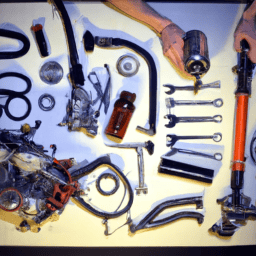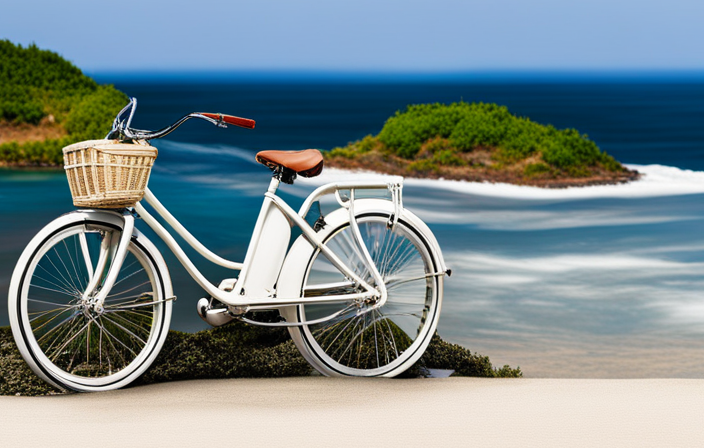Chances are, you’ve devoted plenty of effort and resources to pick out the ideal bike helmet that suits your requirements. However, have you considered the lifespan of that investment?
The lifespan of a bicycle helmet can vary depending on a variety of factors, from its usage to its exposure to the elements. In this article, we’ll explore how long bicycle helmets typically last, signs that your helmet needs to be replaced, and tips for extending its lifespan so you can get the most out of your investment.
While there’s no set expiration date for bicycle helmets, it’s important to understand that they do have a limited lifespan. Factors such as the frequency of use, exposure to UV rays, and the quality of the helmet’s materials can all affect how long it will last.
Understanding the lifespan of your helmet is important to ensure that you’re staying safe on the road and protecting your head from potential injuries. So, let’s dive in and explore everything you need to know about the lifespan of bicycle helmets.
Key Takeaways
- Bicycle helmet lifespan can vary based on usage, UV exposure, and material quality.
- It is recommended to replace helmets every 3-5 years regardless of damage to ensure protection.
- Proper storage, handling, and regular cleaning and maintenance can help extend the helmet’s lifespan and effectiveness.
- Choosing the right helmet involves factors such as a snug and comfortable fit, matching riding style, proper ventilation, and certification from a reputable safety organization.
Understanding the Lifespan of Bicycle Helmets
Don’t risk your safety by wearing an expired helmet – find out how long helmets last and when it’s time to replace them!
The lifespan of a bicycle helmet depends on a number of factors, including the quality of the helmet, how often it is used, and the conditions in which it is used. However, most manufacturers recommend replacing your helmet every 3-5 years, regardless of whether or not it has sustained any damage.
It’s important to note that helmet replacement is not just a matter of convenience – it’s a matter of safety. Over time, the materials in your helmet can degrade, which can compromise its ability to protect your head in the event of a crash. Additionally, safety standards for helmets are constantly evolving, and newer helmets may provide better protection than older models.
In the next section, we’ll discuss some signs that your helmet may need to be replaced, so you can stay safe on your rides.
Signs That Your Helmet Needs to be Replaced
If you’ve been using your helmet for a while, you may want to check for these signs that it’s time to replace it. The lifespan of a helmet can vary depending on usage, but generally, a helmet should be replaced every three to five years. However, there are other indicators that your helmet may need to be replaced due to wear and tear.
Here are three signs that your helmet needs to be replaced:
- Visible cracks or damage to the shell of the helmet.
- Loose or worn-out padding inside the helmet.
- Straps that are frayed or damaged.
To extend the lifespan of your helmet, there are a few tips you can follow.
Tips for Extending the Lifespan of Your Helmet
To extend the lifespan of your helmet, there are a few key practices that you should follow. Proper storage and handling is essential. Helmets should always be kept in a cool, dry place, away from direct sunlight and extreme temperatures.
Regular cleaning and maintenance is also important. You should make sure to follow the manufacturer’s instructions for care and cleaning.
Finally, it’s crucial to avoid damage and impact. Even a small crack or dent can compromise the structural integrity of your helmet.
By following these tips, you can help ensure that your helmet provides reliable protection every time you ride.
Proper Storage and Handling
Properly storing and handling your bicycle helmet can significantly extend its lifespan, just like properly storing and handling a loaf of bread can keep it fresh for longer. Here are some tips on how to store and handle your helmet properly to prevent damage:
- Always store your helmet in a cool, dry place away from direct sunlight, heat, and moisture.
- Avoid hanging your helmet on handlebars or other protruding objects, as this can cause it to fall and get damaged.
- Use a helmet bag or case to protect your helmet when transporting it.
When not in use, store your helmet with the straps fastened to prevent them from getting tangled or damaged. Never leave your helmet on the ground or toss it around, as this can cause scratches or dents.
Remember that proper storage and handling can help prolong the life of your helmet and keep you safe while cycling. Regular cleaning and maintenance are also important to ensure that your helmet is always in good condition.
Regular Cleaning and Maintenance
Maintaining your helmet is like taking care of a beloved pet – it needs regular attention to stay in good shape and protect you on your cycling adventures. To ensure that your helmet lasts as long as possible, it’s important to clean it regularly.
How often you clean your helmet depends on how often you use it, but as a general rule, you should clean it after each use. Sweat and oil can build up on the pads and straps, making them less effective over time. Use a mild soap and water to clean the helmet, making sure to rinse it thoroughly and let it air dry. Avoid using harsh chemicals or solvents, as these can damage the helmet’s materials.
In addition to regular cleaning, it’s important to perform basic maintenance on your helmet. Check the straps and buckles regularly to make sure they’re secure and not worn out. If any parts of the helmet are damaged, replace them immediately. There are also helmet-specific cleaning products available that can help you keep your helmet in top condition.
Following these simple steps can help your helmet last for many years, keeping you safe on all your cycling adventures.
As important as it is to clean and maintain your helmet, it’s equally important to avoid damage and impact. Even the slightest bump or drop can compromise the helmet’s ability to protect you, so be sure to handle it with care.
In the next section, we’ll discuss some tips for avoiding damage to your helmet and keeping it in good condition for years to come.
Avoiding Damage and Impact
Now that you know how to maintain and clean your bicycle helmet, it’s time to talk about preventing damage and impact.
As you ride your bike, your helmet may experience wear and tear, which can affect its ability to protect you in case of an accident. It’s essential to avoid dropping your helmet or slamming it against hard surfaces, as this can cause damage to the outer shell or the inner foam.
To ensure your helmet remains intact and provides maximum impact resistance, you should store it in a cool, dry place when not in use. Avoid exposing it to extreme temperatures or leaving it in direct sunlight for extended periods.
If your helmet has been involved in an accident, it’s crucial to replace it immediately, even if there are no visible signs of damage. Remember, the foam liner may have been compromised, and it won’t provide the same level of protection as a new helmet.
Now that you’re aware of how to prevent damage and ensure your helmet maintains its impact resistance, it’s time to choose the right helmet for your needs.
Choosing the Right Helmet for Your Needs
When picking out a helmet, it’s important to consider your individual needs and preferences. There are several factors that you should keep in mind when selecting a helmet to ensure that it provides the best protection possible.
Here are some features and fitting tips to help you choose the right helmet for your needs:
-
Look for a helmet with a snug but comfortable fit. It should sit level on your head and cover your forehead without obstructing your vision.
-
Choose a helmet that matches your riding style. If you’re a casual rider, a basic helmet will suffice, but if you’re a serious cyclist, you may want to invest in a more advanced model.
-
Check for proper ventilation to keep your head cool and comfortable.
-
Look for a helmet with a certification from a reputable safety organization, such as the Consumer Product Safety Commission or Snell Memorial Foundation.
By taking the time to choose the right helmet and ensuring that it fits properly, you can help reduce the risk of head injury in the event of a fall or collision.
Remember, your helmet is your first line of defense against head injuries, so make sure you choose one that will provide the protection you need.
Frequently Asked Questions
How do I properly clean and maintain my bicycle helmet?
Cleaning your helmet is like giving it a spa day. To maintain helmet hygiene, gently wash the exterior with mild soap and water. Remove the pads and hand wash with warm water and mild detergent. Air dry completely before reassembling.
Can a helmet still be effective if it has been involved in a minor crash?
If your helmet has been involved in a minor crash, it’s recommended to replace it. Even if there aren’t any visible signs of damage, the helmet’s protective properties may have been compromised. It’s better to err on the side of caution and get a new one.
How do I know if my helmet is the right size and fit for my head?
To ensure proper helmet sizing and fit, measure your head circumference and choose a helmet within the appropriate size range. Use helmet adjustment techniques such as adjusting straps and fit systems to ensure a snug and secure fit.
Are there any specific safety standards that I should look for when choosing a helmet?
Choosing a helmet with safety ratings (e.g. CPSC, ASTM) is crucial for protection. However, proper fit is just as important. Think of it like a seatbelt in a car – it won’t work if it’s not buckled correctly.
Can I still use a helmet that is past its recommended lifespan if it has not been involved in any accidents?
If your helmet is past its recommended lifespan, it’s time for a replacement. Helmets are designed to provide optimal protection for a limited time, and expired helmets may not sufficiently protect you in the event of an accident.
Conclusion
So, you’ve learned how to determine the lifespan of your bicycle helmet, signs that indicate it’s time to replace it, and tips to extend its life. But before we part ways, here’s a surprising statistic: only 20% of bicycle riders regularly wear helmets, according to the National Highway Traffic Safety Administration.
That means the majority of bike riders are putting themselves at risk every time they hit the road. Don’t be part of that statistic! Make sure you have a properly-fitted helmet that’s in good condition before your next ride. Remember, your safety is worth the investment!









